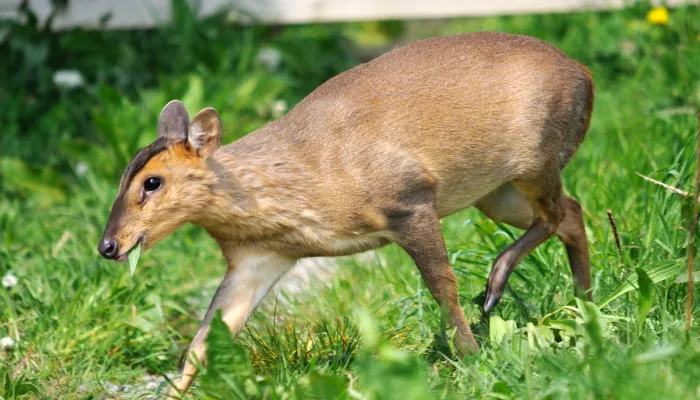About
The small, Chinese muntjac deer was introduced to Woburn Park in Bedfordshire at the start of the 20th century and rapidly spread into the surrounding area. It is now a common animal across southeast England and can be found in woodland, parkland and even gardens. Muntjac deer are notorious browsers, eating the shoots from shrubs, as well as woodland herbs and brambles. This clearing of woodland understory has been linked to declines in species such as nightingales.
Male muntjacs have short, unbranched antlers that slope backwards, and a pair of long canine teeth. They breed all year-round, but females usually only have one kid at a time. Muntjac deer are also known as 'barking deer' because of their dog-like calls.
How to identify
A very small, stocky deer, the muntjac deer is about the same size as a medium dog. It is gingery-brown, with a pale underside, darker stripes in its face, and small, single-pointed antlers.
Did you know?
At least seven species of muntjac are known, from Pakistan to Java and China. Two species were actually introduced into the UK, but the one that got cosy here is the Reeves' muntjac.

